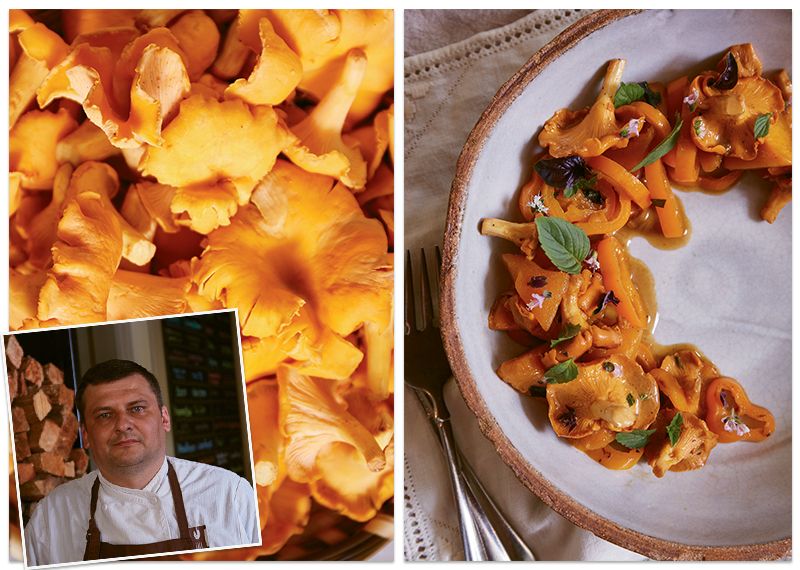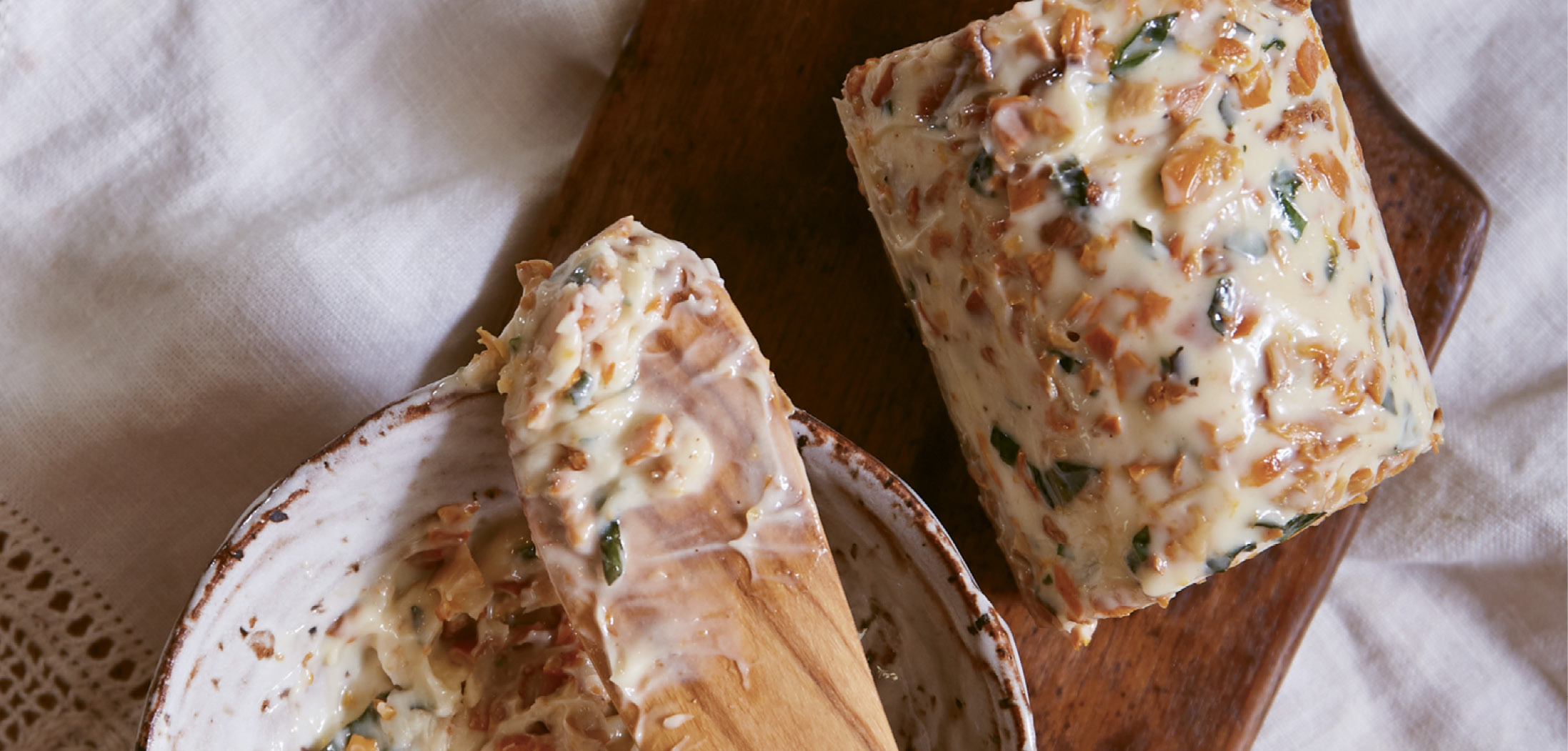Three recipes to usher in fall from Husk’s Travis Grimes

Meet the Chef: Travis Grimes (inset photo above)
Born and raised in the Lowcountry, Travis Grimes developed an early affinity for kitchen life, spending hours poring over his mother’s cookbooks and whipping up soufflés. He manifested these early curiosities by attending culinary school at Johnson & Wales University in Charleston. After graduating in 2000, chefs Louis Osteen and Michael Kramer guided Grimes throughout his formative professional years. In 2010, he opened Husk with executive chef Sean Brock, at the height of a Southern foodways renaissance. Pantry practices such as seed saving, curing, and canning—prominent at Husk—shaped Grimes’s cooking approach, further informing his perspective on the life cycle of farm-to-table food: what is grown, cultivated, caught, preserved, and served in the South. Now in his third year as executive chef, Grimes continues to champion ingredients of local Lowcountry farmers, fishermen, and producers who provide endless inspiration from the region he has long called home.
Recipes:

North Georgia Candy Roaster Squash with Chanterelles, Basil, and Aji Dulce Peppers

Carolina Gold Rice Fritters with Chanterelles and Parmesan

Chanterelle Butter with Orange and Basil
Chef’s Tips:
■ Worth the splurge: “At $14 to $18 per pound, chanterelles are pricey, but the cost is made up in flavor: subtle, fruity notes and an elegant, natural meatiness. If you live in the right area, Charleston for instance, there is no need to spend top dollar. You only need to venture off the path into the woods and on a hot day after a good rain.” Though it’s best to leave the foraging to pros!
■ Clean sweep: “Start with a small, clean paint or makeup brush. Gently sweep away as much sand as possible, making sure to pay extra attention to the gills under the cap. After brushing, soak the mushrooms in cold water. I submerge them in a sink. Gently roll them in the water, and then let them sit for a couple of minutes—this will allow the sand to settle to the bottom of the sink. Carefully lift the mushrooms out of the water. I repeat this step two more times, then lay the mushrooms on a tray with towels to wick away extra moisture. I’ll store the clean mushrooms, refrigerated, on a tray with fresh towels for up to five days.”
■ Getting choosy: “When selecting chanterelles, you want to look for firm, full texture. If they’re wrinkled, that’s a sign they are old and therefore dried out. On the other hand, a chanterelle that is very heavy for its size and leaks water when slightly squeezed is a sign of waterlogging—when mushrooms are harvested in an overly water-saturated area. These mushrooms will release lots of water when cooking and will generally be soggy.”

■ Supporting characters: “I enjoy using ingredients that encourage flavor profiles already present in chanterelles to shine: thyme nurtures the natural, meaty, umami essence in mushrooms; orange draws out a mushroom’s inherent fruity characteristics.”
■ Versatile veg: “Unlike some varieties of mushroom, chanterelles are equally delicious cap to stem. Cooking with chanterelles is part of capturing late summer Lowcountry flavor in Charleston, but also ushers in the beginning of autumn.”